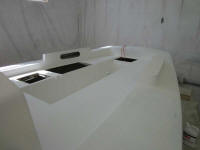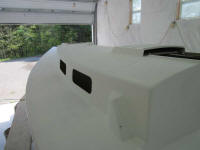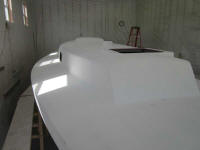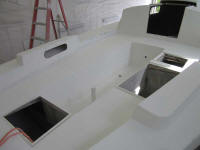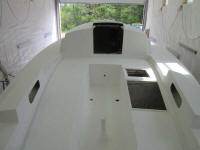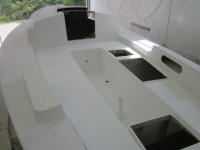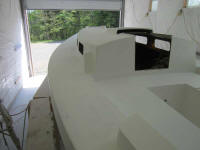
110 Cookson Lane | Whitefield, ME 04353 | 207-232-7600 | tim@lackeysailing.com
After raising the staging for deck work, I completed the 220-grit sanding in the final areas--sidedecks, foredeck, and cabin trunk. Afterwards, I vacuumed and solvent-washed.
I counted on the high build primer to highlight any areas on deck requiring additional attention, and that was certainly the case. Though I'd tried to do a lot of pinhole filling before hand, there ended up being many areas requiring fine filling, particularly in those areas where the original gelcoat had been sanded through, or nearly through--which was a widespread condition. Skin laminates directly beneath gelcoat tend to contain numerous small air pockets that become exposed upon removal of the gelcoat, some of which I'd filled earlier, but many of which showed up clearly only now.

This made it easy at this stage to fill and eliminate these surface problems. That said, there were more surface interruptions than usual, mostly because of the extent of gelcoat removal that had occurred throughout the deck repair process.
As much as I hated to besmirch the clean new primer, I mixed and applied a skim coat of fine fairing filler to the decks as required. Although the various areas requiring filling were widespread, the nature of this process made it look far worse than the actual situation; most would be sanded away later, and additional primer later in the refinishing process would hide any new filling material.
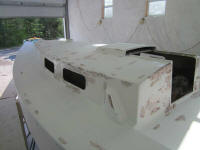
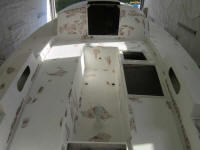
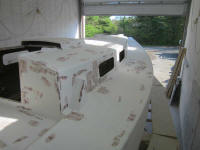
I'd repeat this basic process on the hull sometime in the generally near future.
Total Time on This Job Today: 8.5 hours

